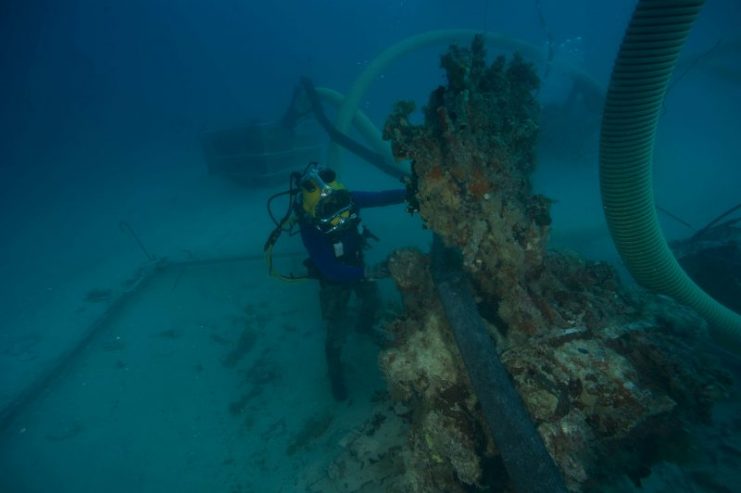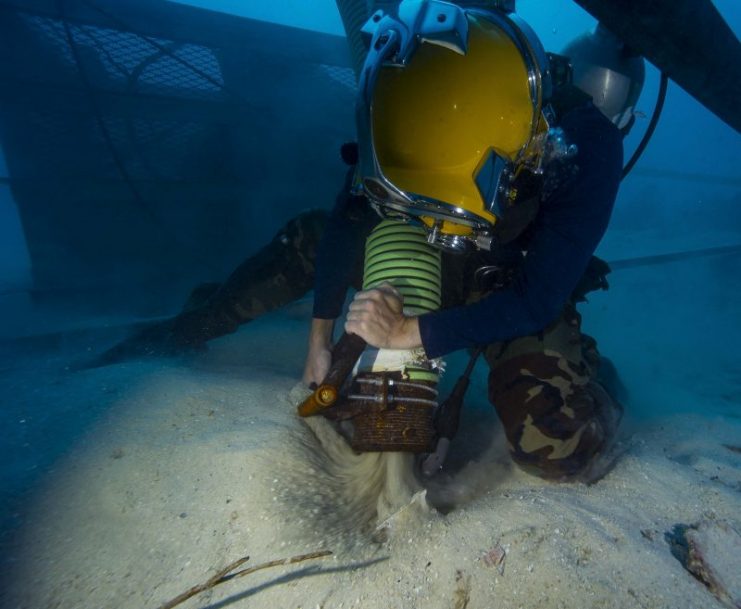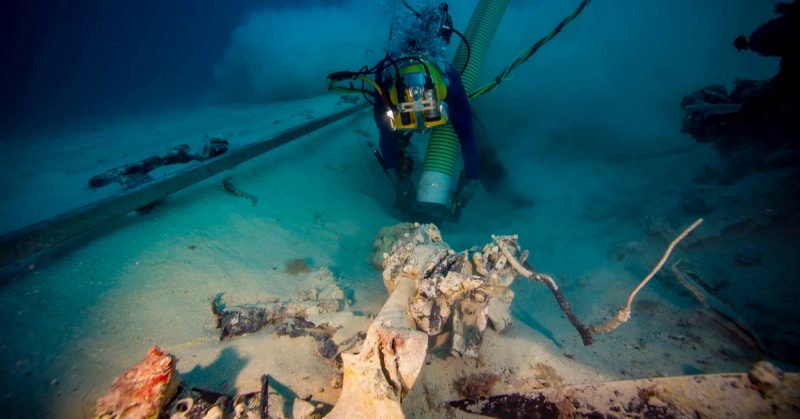The remains of a US pilot shot down over the Pacific during WWII, were discovered with his plane near Ngerekebesang Island in the Republic of Palau. The wreckage had been obscured by sand and sea life that had covered it in the seventy years since the crash.
Members of the US military worked to retrieve both the remains of the pilot and the remnants of his plane, completing their mission on February 25, 2018. Captain Mike Flanagan, a civilian mariner and master of the US Naval Ship Salvor – a ship used for rescue and salvage – said that he had not seen a military detachment work so hard in a long time.
The name of the pilot is being withheld until a positive identification can be made and any next-of-kin contacted.
To obtain a successful completion of the mission, the Defense POW/MIA Accounting Agency (DPAA) sent an Underwater Recovery Team which was staffed by members of the US Army, Navy and Air Force. Civilian employees of the Department of Defense assisted on board the USNS Salvor.

According to Lieutenant Commander Tim Emge, a salvage officer in the 7th Fleet, divers from the Mobile Diving and Salvage Company 1-6 worked twelve hour days for two months to return the pilot and plane to the surface.
The Underwater Recovery Team used archeological tools to comb the bottom of the ocean for plane parts and items belonging to the pilot.
The USNS Salvor provided a decompression chamber for the divers and a 40-ton crane to lift large objects from the ocean floor.
The Military Sealift Command provided mariners who worked the crane that lifted the salvage baskets. Some crew members with training in archeology helped search for remains by sifting through the sand.
Jean Marien is a civilian mariner and chief mate of the USNS Salvor. He said that the process is very meticulous. It seemed as if the amount of sand to sift through would never end.
Each, 4 feet by 8 feet, basket took five hours to sift. It also needed five to six hours to fill it, requiring more than one dive to complete the filling process. Sometimes the crew kept two baskets going at the same time.

According to a statement released by the US 7th Fleet, the mission was part of the US commitment to recovering personnel lost in WWII.
Two sites in the area were identified. In one location an F6F-3 Hellcat was located, and in the other, a TBM1-C Avenger was found. Preliminary investigations were made in 2015 and 2016 before this year’s mission. The actual recovery took 45 days. According to records, four pilots were lost in the two crashes.
Identification of the recovered pilot could take months or even years to complete.
Major Jessie Romero is a public affairs officer for the DPAA. He said that the goal is to provide answers for the families of missing servicemen who are left to wonder what happened to their loved ones.
There are still 72,941 servicemen missing from WWII.
Romero said the general public probably find it hard to believe the number of people missing from past wars. Discovering what happened to a family member two or three generations later and being able to know the full story of their experience during WWII must be “pretty tremendous,” he said.
